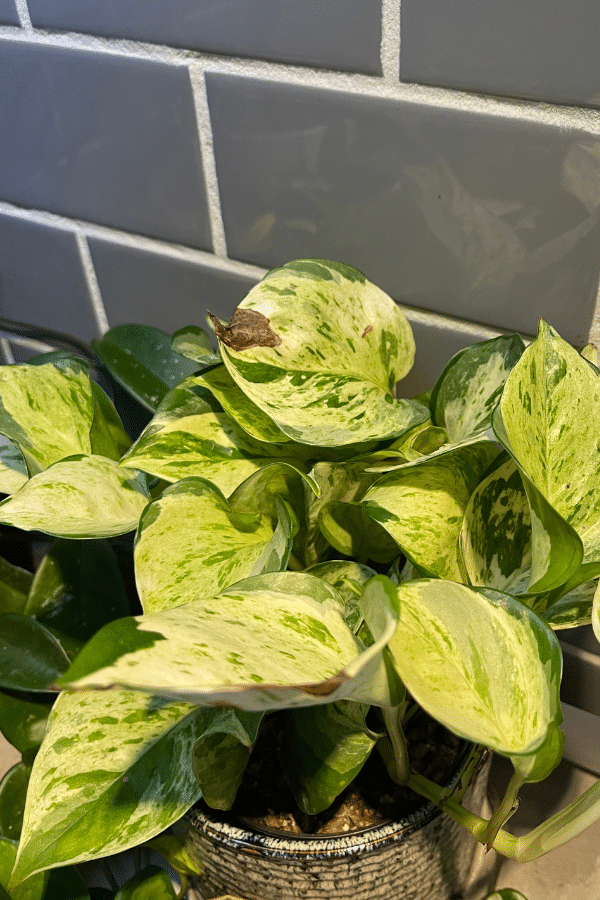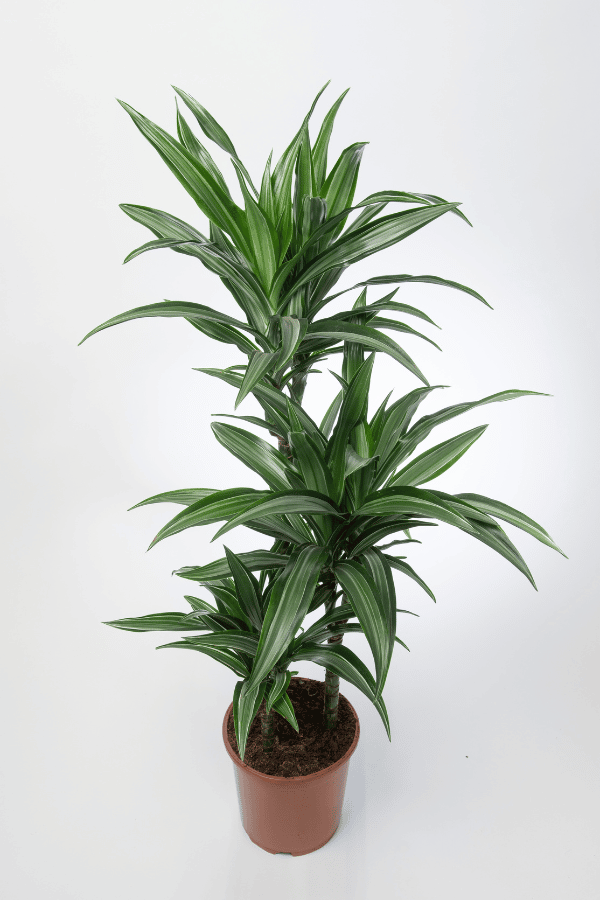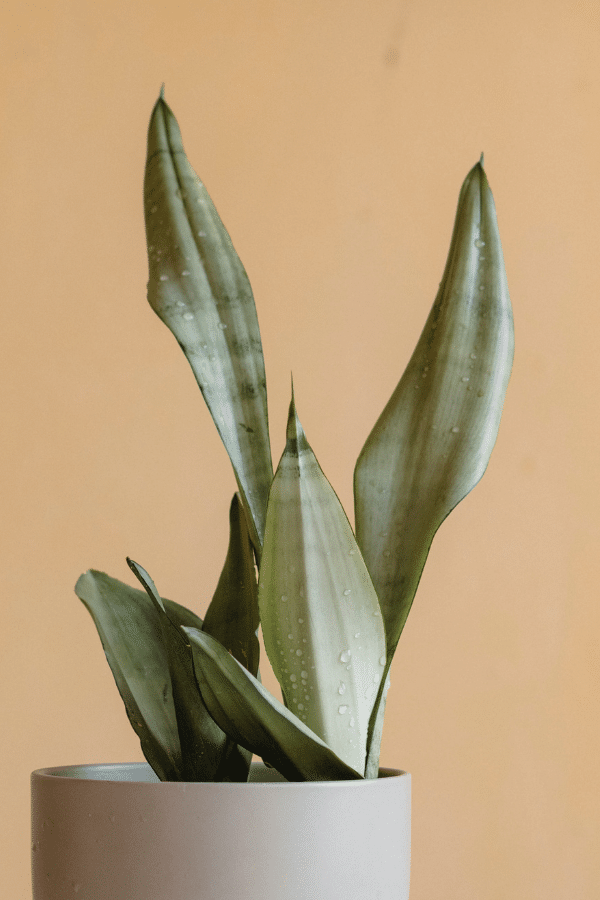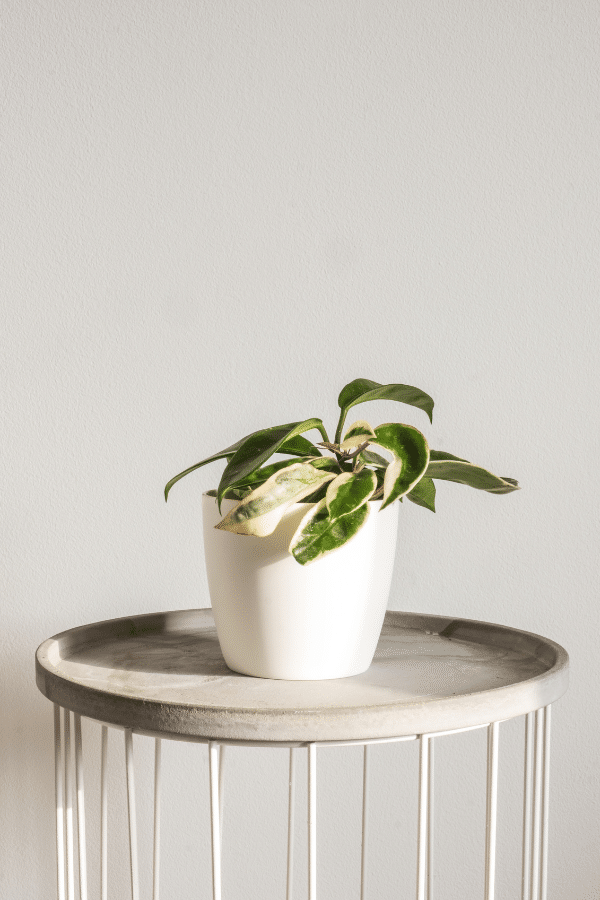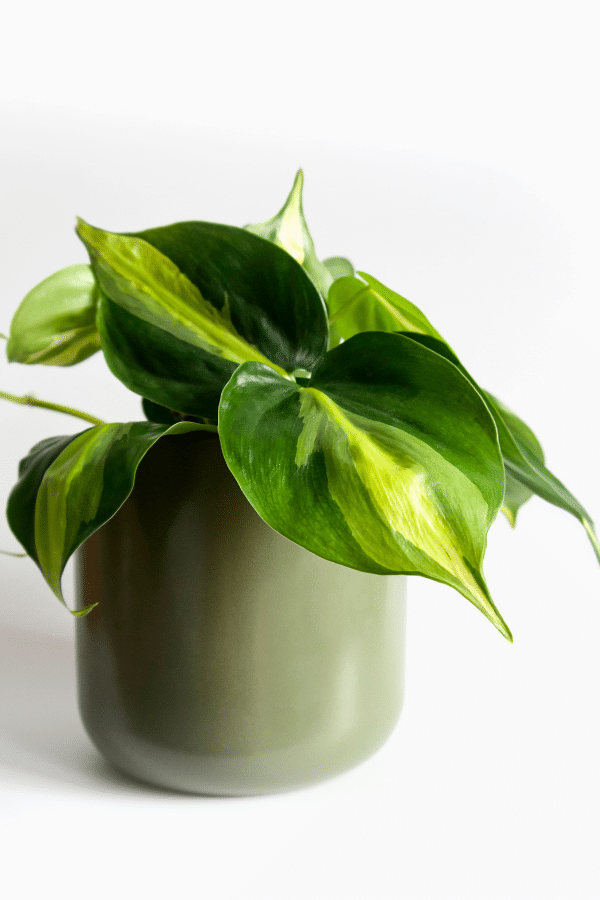How Often to Water Ficus
Watering your ficus plant may seem like a simple task, but it’s crucial to understand the specific needs of these popular houseplants. Ficus plants, known for their attractive foliage and air-purifying abilities, come in various species, like the Ficus Benjamina, Ficus Elastica, and Ficus Lyrata. Each type has unique qualities that influence its water requirement and schedule.
While the amount of water and frequency of watering depends on factors such as the plant’s size, potting medium, and environment, there are general guidelines to follow for optimal growth. By paying attention to your ficus plant’s hydration needs and monitoring its condition, you can maintain its health and prevent common issues like overwatering, which could lead to root rot and leaf drop.
In this article, we’ll explore proper Ficus watering techniques, signs of overwatering and underwatering, and tips to help you keep your ficus plant thriving. By the end, you’ll better understand how to meet your ficus plant’s water requirements and create an ideal environment for it to flourish in your home.
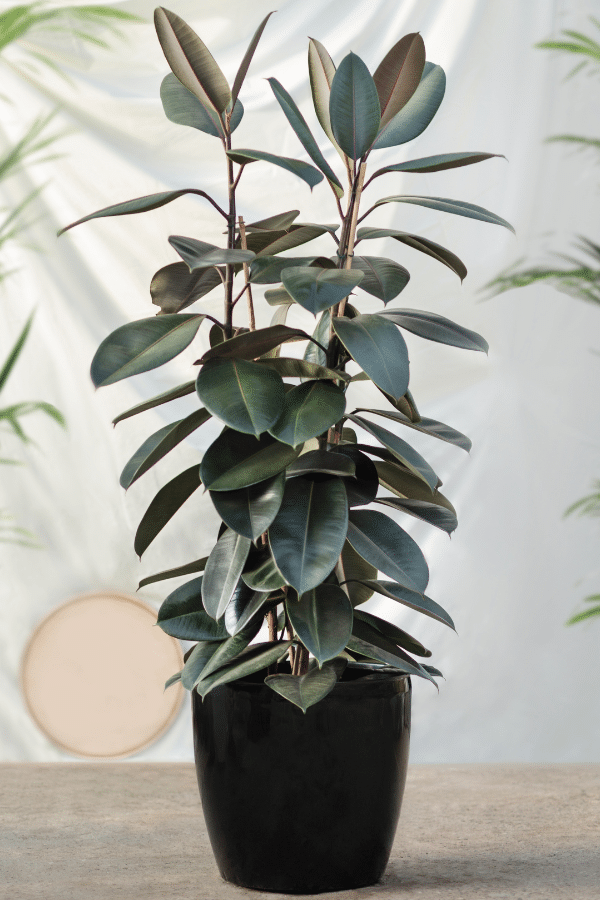
How to Water Ficuses
Here are some guidelines to help you care for your Ficuses watering needs.
Start by choosing the right pot for your ficus plant. Use a pot with drainage holes to prevent excess water from sitting at the bottom, which can lead to root rot. Select a potting mix that drains well and retains moderate moisture to create a good environment for the roots.
Water your ficus tree when the top 1-2 inches of soil becomes dry to touch. It’s important to not let the plant sit in bone-dry soil for too long, as it can cause leaf drop and stress the plant. To water, soak the soil evenly until water begins to drain from the bottom of the pot. This ensures that the roots receive adequate moisture and prevents uneven water distribution causing dry patches in the soil.
Keep in mind that ficus plants have different water requirements depending on various factors such as:
- Season: Ficuses generally need more water during their growing season, which is from spring to early fall. The plant’s growth slows down in the colder months and requires less water.
- Light exposure: If your ficus tree is in a location with brighter light, it will need more frequent watering compared to a plant receiving lower light levels.
- Humidity: Ficus plants enjoy humidity, which helps prevent leaf drop. If your home’s air is dry, consider using a humidifier or placing a tray with water near the plant to maintain humidity levels.
Remember to always be attentive to your ficus plant’s needs and adjust your watering routine accordingly. If you notice any signs of overwatering, like yellowing leaves or a musty smell, reduce the frequency of watering and ensure proper drainage. By following these guidelines, you’ll be able to provide your ficus with the optimal hydration it needs to thrive.
What Type of Water To Use
When it comes to watering your Ficus, the type of water you use can significantly impact the plants health, so it’s critical to use the right kind of water.
Tap water can sometimes contain high levels of minerals and chemicals, such as chlorine and fluoride, which can be harmful to your Ficus. If you choose to use tap water, leave it sitting out for 24 hours to allow the chlorine to evaporate. However, this method may not remove other potentially harmful minerals.
A better option for your Ficus is to use distilled water or reverse osmosis water. These types of water have been purified, removing unwanted minerals and chemicals. This will help maintain the proper moisture levels in the soil and contribute to a healthy growing environment for your Ficus.
Rainwater is another suitable choice for watering your Ficus, as it is naturally free of chemicals and contaminants. Collect rainwater in a container, making sure it is clean and free of debris before using it on your plant. Additionally, rainwater can be slightly acidic, which can help improve the uptake of essential nutrients for your Ficus.
Keep in mind that it’s crucial to monitor the moisture levels in the soil to avoid under or over-watering. Make a habit of checking the soil regularly, and adjust your watering schedule accordingly. Remember, a happy and healthy Ficus starts with proper watering and using the right kind of water.
Top Watering Techniques
The top watering technique is the most common watering technique. This is when you pour water into the soil of the plant until you see water dripping form the drainage holes or when the soil looks fully saturated.
There are pros and cons to this technique.
The pros are you can see and feel the soil to make sure it is very hydrated. The cons are it can attract fungus gnats and if you don’t give the plant enough water, the water won’t reach its roots making it very ineffective.
Bottom Watering Technique
The opposite of the top watering technique is the bottom watering technique, which can be effective.
This is when you water the plant from the bottom and the roots soak up as much water as they need.
To water your Ficus from the bottom, first ensure the pot has a drainage hole. Then, find a container larger than your Ficus pot that has a depth sufficient to hold water. Fill the container with water approximately one-third of the way up. Now, place the pot with your Ficus in it into this container filled with water and leave it there for about 15-30 minutes.The plant will soak up all the water the roots need through the soil.
This method allows the roots get hydrated more effectively.
Carefully remove the pot from the container, making sure to drain any excess water from the drainage hole.
I usually use the top watering technique as my default when I water my Ficus Altissima, Fiddle Leaf Fig, and Ficus Audrey, but I love to bottom water them every month or so.
Common Watering Mistakes
Ficus plants are sensitive to their watering routine, and it is important to strike the right balance. Avoid the following common watering mistakes to keep your ficus healthy and thriving.
Overwatering: One of the most common mistakes is overwatering your ficus. Overwatering can lead to root rot and other problems. Make sure to let the top inch or two of soil dry out between waterings. When watering, soak the soil thoroughly until water drains from the bottom. Empty the saucer after a few minutes to prevent the plant from sitting in water.
Underwatering: On the other extreme, underwatering can also cause problems. Ficus plants need consistent moisture to grow. If you notice leaves turning yellow and dropping, this might be a sign of underwatering. Monitor the moisture in the soil and adjust your watering schedule accordingly, especially during hot or dry periods.
Using tap water: Ficus plants can be sensitive to the salts and chlorine in tap water. Whenever possible, use filtered or distilled water, or let tap water sit out for 24 hours before watering to allow chlorine to evaporate. By doing this, you can prevent potential harm to the plant.
Ignoring humidity: Ficus plants thrive in high humidity environments, so not addressing the humidity levels can also lead to problems. Keep the area around your plant humid by placing a tray of water with pebbles next to it or using a room humidifier. Regularly mist the leaves with water to help the plant maintain the moisture it needs.
Factors in Determining When to Water Ficuses
When it comes to watering your ficus, several factors play a crucial role in determining the appropriate schedule. In this section, we will briefly discuss these factors to help ensure the health and well-being of your indoor plants.
Pot Type
When selecting a pot for your Ficus plant, it’s important to consider the type of pot that will provide the best environment for healthy growth. A well-draining pot is essential for preventing root rot and ensuring your Ficus receives the appropriate amount of water.
Choose a pot with a drainage hole, as this will allow excess water to escape and prevent the soil from becoming overly saturated. The size of the pot is also a crucial factor to consider. Your Ficus plant requires enough space to accommodate its root system, so opt for a pot that provides ample room for growth.
There are various materials available for pots, and each has its advantages and drawbacks. Here is a summary of the most common pot materials and their properties:
Ceramic: Offers excellent insulation, but can be heavier and more fragile.
Terracotta: Breathable and promotes healthy root systems, but can dry out quickly.
Plastic: Lightweight, affordable, and retains moisture, but may not provide the best insulation.
When deciding on a pot, also consider the aesthetic appeal, as well as its functionality. A beautiful pot can enhance the overall appearance of your Ficus plant, adding an attractive element to your indoor or outdoor space.
Pot Size
When it comes to watering your Ficus, pot size plays a crucial role in maintaining the plant’s health. Choosing the right pot size ensures that your Ficus can grow and thrive, while allowing for proper drainage.
In general, you should select a pot slightly larger than your Ficus’s root ball. This allows for adequate space for growth and helps prevent root rot. As a guideline, aim for a pot that is about 1-2 inches wider in diameter than the root ball and 2-3 inches deeper.
Repotting your Ficus is necessary when you notice roots growing out of the drainage holes or when you can see the roots on the top of the soil. This typically occurs every 1-2 years. When repotting, it’s important to choose a pot with proper drainage, as ficus plants are sensitive to overwatering. Look for pots with multiple drainage holes at the bottom.
Type of Soil
When choosing the soil for your Ficus, it’s essential to make sure it provides the right balance of drainage and water retention. This delicate balance ensures that your Ficus receives all the nutrients it needs to thrive.
If you have a well-draining mix as your soil, you’ll need to water a more than if you pot your Ficus with outdoor soil.
Type of Light
When it comes to nurturing your Ficus, understanding the appropriate lighting conditions is essential. Ficus plants love as much light as they can possibly get! thrive under high bright sunlight. Placing them near a window that receives plenty of natural light, is ideal.
In case your home doesn’t provide sufficient indirect sunlight, you can also use grow lights. Full-spectrum LED grow lights can mimic the natural lighting conditions needed so you can grow happy Ficuses when you don’t have adequate natural lighting.
Remember to rotate your Ficus regularly, every few weeks or so, to ensure even exposure to light, promoting balanced growth. By providing the right type of light, you can keep your Ficus healthy and vibrant, enjoying its lush green presence in your space.
Temperature
Maintaining the right temperature for your Ficus is essential for its health and growth. Ficus plants generally thrive in temperatures ranging from 65-75°F (18-24°C) during the day, and about 10°F (5°C) cooler at night.
Extreme temperature fluctuations can stress the plant, causing leaf drop. Ensure your Ficus is placed away from cold drafts, windows or vents, as these can negatively affect its overall well-being. Be mindful of sudden temperature changes when moving the plant indoors or outdoors or when transitioning between seasons.
Humidity
Ficus trees thrive in environments with a good balance of humidity. In their natural habitat, they experience plenty of humidity to support healthy growth. To replicate these conditions in your home, here are a few tips to increase humidity around your Ficus.
Firstly, you can place a tray of water near your Ficus. As the water evaporates, it will create a humid environment for your plant. Make sure to replenish the water in the tray as it evaporates.
Alternatively, you can mist your Ficus regularly with water. This method provides a direct increase in humidity by applying water to the leaves and surrounding air. However, make sure to not overdo it, as too much moisture on the leaves may lead to fungal infections.
Investing in a humidifier can also help maintain optimal humidity levels for your Ficus. Place it near your plant and adjust the settings according to your plant’s needs. Running a humidifier can prevent dry air from depleting the sap from your Ficus; this sap is crucial for its growth and overall health.
It is important to monitor the humidity levels in your space. You can use a hygrometer to measure the humidity and ensure it remains within an ideal range. Keeping the humidity around 50-60% is ideal for Ficus trees.
Remember, a properly humid environment will make a noticeable difference in your Ficus’s health and growth. By following the tips above, you can create a suitable environment for your plant to flourish.
When to Water Ficus
Watering in Summer
During the summer months, your ficus tree will need more frequent watering due to the increased heat and sunlight. Pay close attention to the moisture levels in the soil to ensure it remains consistently damp but not saturated. In high temperatures, this may mean watering your Ficus every other day or even daily if placed in direct sunlight.
Ficus trees prefer indirect sunlight, so move your plant to a location where it receives bright but indirect light during the peak summer hours. This will not only help reduce water evaporation, but it will also protect your Ficus from potential sunburn.
When watering in the summer, it’s essential to soak the soil thoroughly, allowing water to reach the root system. To do this, water the plant slowly and evenly, ensuring that the entire soil surface gets wet. To check if your Ficus has received enough water, the top two inches of soil should feel moist to the touch after watering.
In addition, it is essential to examine the quality of your water. Ficus trees are sensitive to mineral build-up, so using distilled or filtered water can protect your plant’s health. Avoid using heavily chlorinated tap water as it may cause leaf drop and other complications for the ficus tree.
Watering in Winter
In winter, your ficus plant’s watering needs will change due to lower light levels and cooler temperatures. It’s essential to adjust your watering routine to maintain your Ficus’s health during this time.
Firstly, ensure that your Ficus receives indirect sunlight throughout the winter season. Place it near a sunny window, but avoid direct sunlight as it can damage the leaves and cause problems such as leaf drop or scorch marks.
When it comes to watering, decrease the frequency compared to the warmer months. Test the soil moisture by pressing your finger about an inch into the soil. If it feels dry, it’s time to water; if it’s moist, wait a couple more days before checking again.
Overwatering can lead to root rot, a common issue for ficus plants in winter. To prevent this, use room temperature water, and ensure that your pot has proper drainage. After watering, allow excess water to drain away, and never let your Ficus sit in standing water.
Moreover, maintain the humidity levels around your Ficus to support healthy growth during the winter. Dry indoor air can make it difficult for your plant to thrive. To address this, place a saucer filled with water and pebbles beneath your pot, or use a room humidifier.
Signs of Overwatering & How to Fix
Overwatering is a common issue faced by Ficus plant owners, which can lead to various problems such as leaf drop and weak stems. In this section, you will learn to recognize the signs of overwatering and understand how to fix the issue.
One of the most evident signs of overwatering is leaf drop. If you notice that your Ficus is losing leaves rapidly, it may be the result of excessive water. The leaves tend to turn yellow and fall off as the root system becomes overwhelmed, leading to a weak and struggling plant.
In addition to leaf drop, overwatering may cause the stem to soften and become mushy. If you observe any changes in your Ficus’s stem, such as discoloration or a lack of rigidity, consider adjusting your watering schedule.
To fix the overwatering issue, follow these steps:
Inspect the roots: Gently remove the plant from its pot and examine the root system. Healthy roots should be firm and white, while overwatered roots may appear brown and mushy.
Trim damaged roots: Use a pair of clean, sharp scissors to trim away any damaged or rotting roots. This will promote better air circulation and ensure healthier growth.
Repot with fresh soil: Choose well-draining soil and use a pot with drainage holes to repot your Ficus. This will help prevent future instances of overwatering.
Adjust watering habits: Be mindful of how much water you provide to your plant. Stick to a regular watering schedule and avoid saturating the soil as this can cause root rot.
By implementing these steps, you can effectively address the issue of overwatering and return your Ficus to a healthier state. With proper care and attention to watering habits, your Ficus will flourish, and its leaves and stem will remain healthy and strong.
Signs of Underwatering & How to Fix
Underwatering your Ficus plant can lead to various issues, and it’s essential to identify these signs early on. In this section, we will discuss the common signs of underwatering and how you can address them to restore your plant’s health.
Yellow leaves: One clear sign of underwatering is the yellowing of your Ficuses leaves. When a Ficus receives insufficient water, it can struggle to maintain its green appearance. To counter this issue, ensure that you consistently water your plant, keeping the soil evenly moist.
Wilting: Ficus plants require moisture to maintain their rigid structure. Underwatered plants may start to wilt, with their leaves drooping and becoming limp. To remedy this situation, water your plant thoroughly, allowing the excess to drain, and then maintain a regular watering schedule.
Dry and falling leaves: A Ficus plant with dry and falling leaves can be indicative of underwatering. When the plant lacks water, it releases its oldest leaves to conserve energy. In such cases, increase your watering frequency, and observe the plant closely, adjusting your routine as needed.
It’s crucial to establish a proper watering routine for your Ficus plant to prevent underwatering:
- Keep track of how often you water your plant, ensuring it receives enough moisture.
- Check the soil regularly by poking a finger about an inch deep. If the soil feels dry, it’s time to water.
- Ensure proper drainage by using a well-draining soil mix and a pot with drainage holes. This will help prevent overwatering and root rot, while still providing adequate moisture.
By following these tips and closely monitoring your Ficus plant, you can maintain its health and prevent underwatering. Remember to adjust your watering routine based on the specific needs of your plant and the environmental conditions it’s in.

